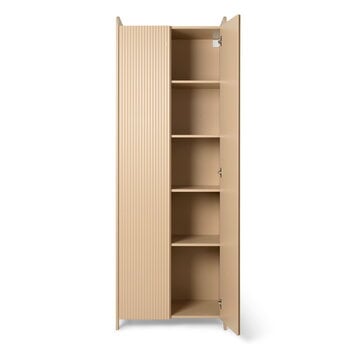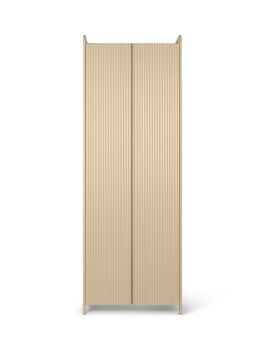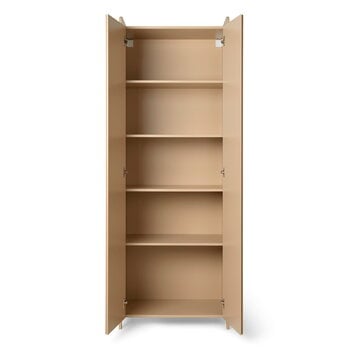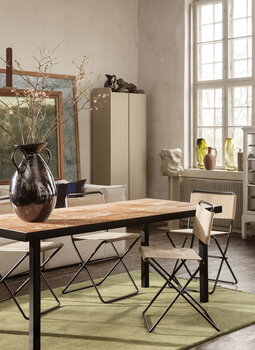The Sill cupboard by ferm LIVING provides you with an attractive, multifunctional storage solution for various spaces. Use it as a wardrobe in the hallway or bedroom, as a cupboard in the kitchen or for storing toys in the children’s room. With small edges on three sides, the top of the cabinet can be used for displaying your favourite items, plants or lamps. The name Sill comes from the French word ”sillon”, which refers to the carved grooves that adorn the doors of the cabinet.
Sill cupboard, tall, cashmere
ferm LIVING
Description
The Sill cupboard by ferm LIVING provides you with an attractive, multifunctional storage solution for various spaces. Use it as a wardrobe in the hallway or bedroom, as a cupboard in the kitchen or for storing toys in the children’s room. With small edges on three sides, the top of the cabinet can be used for displaying your favourite items, plants or lamps. The name Sill comes from the French word ”sillon”, which refers to the carved grooves that adorn the doors of the cabinet.
Product details (8)
- Colour
- Beige
- Width
- 70 cm
- Depth
- 40 cm
- Height
- 200 cm
- Material
- Painted MDF with carved doors
- Weight
- 74.5 kg
- Notes
- The tall cupboard has 4 shelves inside. The safety wall brackets must be firmly installed into the wall.
- Care instructions
- Wipe with a damp cloth.
- Product ID


















